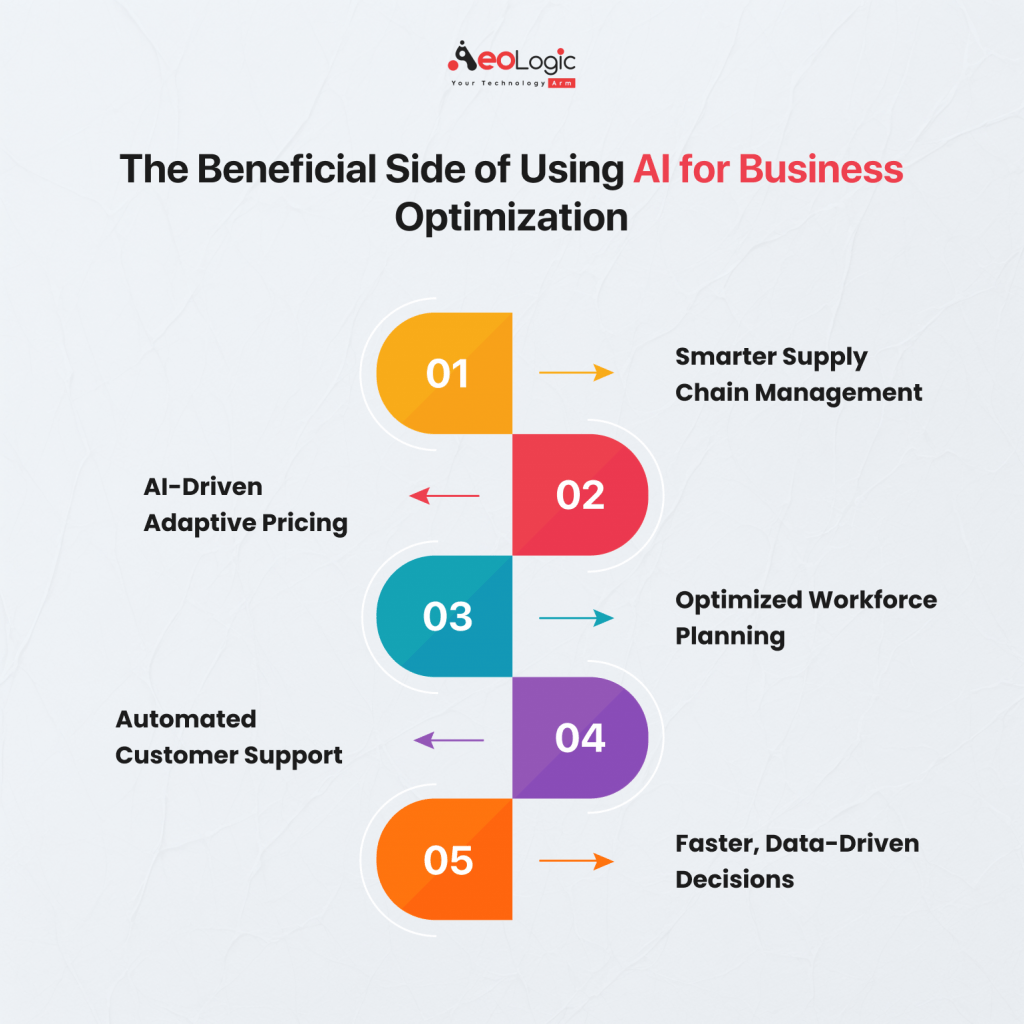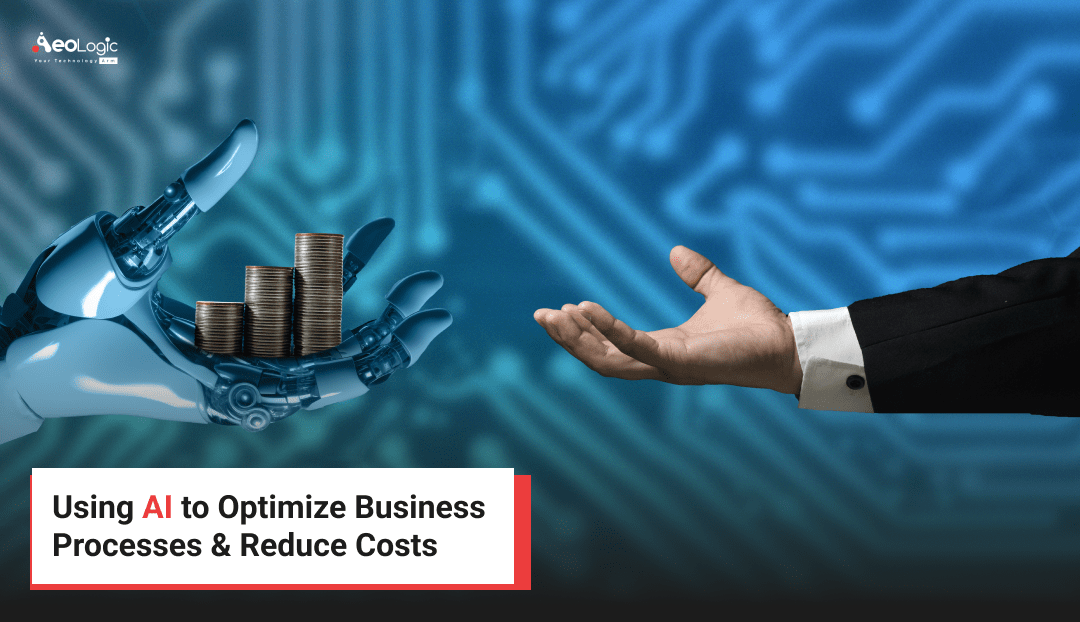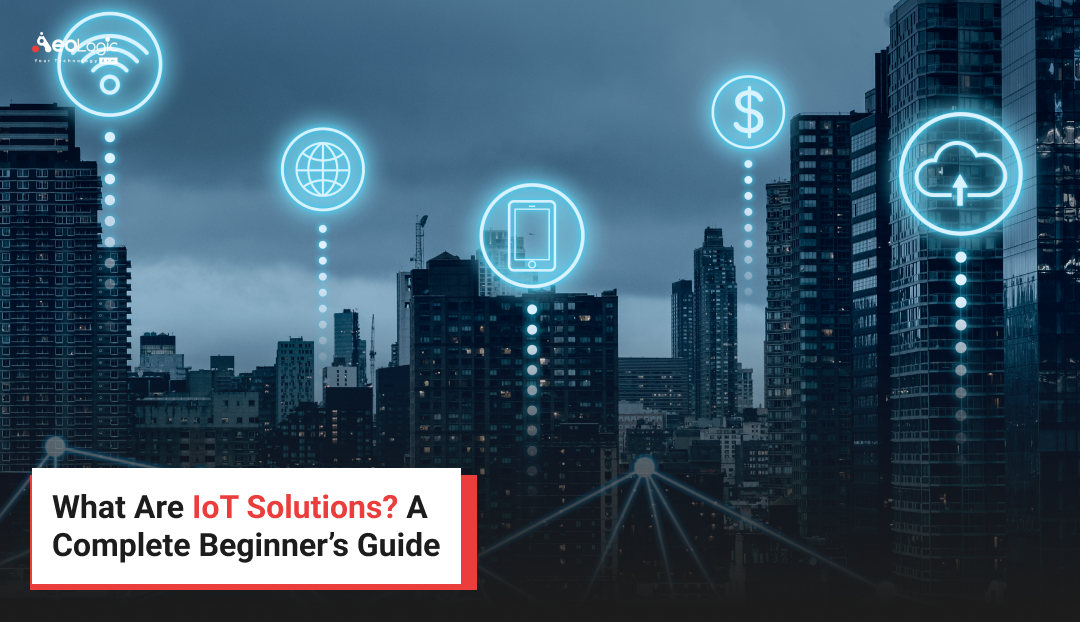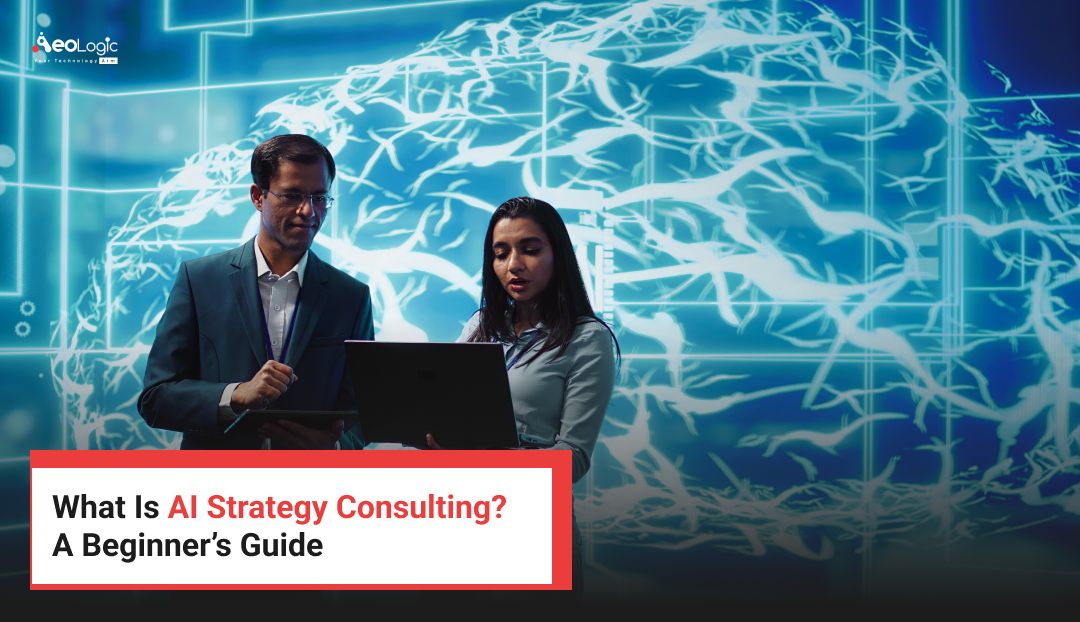With the increasing volume of data generation and complexity of business processes, it is important to find solutions to optimize processes or operations in a better way that reduces unnecessary expenses to boost growth and revenue generation.
Businesses cannot stay competitive without implementing specific solutions tailored to their needs. Currently, most businesses are behind in the competition as they waste too much time on repetitive tasks, do not accurately forecast, and do not have information about regulatory compliance, which results in penalties, increased labor costs, and maintenance charges for equipment. AI-powered solutions play an important role in optimizing business processes and reducing costs in today’s world.
AI can enhance efficiency and productivity by automating repetitive tasks, predictive maintenance of equipment failure, analysis of data to provide insights, better demand forecasting, enhance regulatory compliance, enhances decision making, maintain the balance between demands and supply, supply chain regulation in a better way, inventory management, and better customer support.
Artificial intelligence algorithms can understand the pattern of any process and optimize it better without human intervention. The better management processes lead to fewer chances of faults and errors that prevent any unexpected and unnecessary costs.
Explore more: Why AI Solutions are Key to Driving Business Growth
AI Market Size and Projected Growth
The Artificial Intelligence market size is projected to reach US$244.22bn in 2025. The market size is expected to show an annual growth rate (CAGR 2025-2031) of 26.60%, resulting in a market volume of US$1.01tn by 2031.
In global comparison, the largest market size will be the United States (US$73.98bn in 2025). A significant portion of businesses, including 42% of enterprise-level companies with over 1,000 employees, are already using AI. Many businesses are using AI to improve customer interactions, with 19 in 20 customer interactions potentially being AI-assisted.
AI is being used to enhance operations, with 56% of businesses utilizing AI for optimization and efficiency. AI is also being used for cybersecurity and fraud management purposes, with 51% of businesses leveraging AI for these areas.
A majority of executives believe that AI will be a significant business advantage in the future, with 72% holding this view. While AI may automate certain tasks, it is also creating new job opportunities, with projections suggesting a net gain of 12 million jobs by 2025.
Why is it important to optimize business Processes or Operations and reduce costs with AI?
AI has been developed in recent years and has benefited various businesses and enterprises in enhancing various aspects. AI can analyze data in better ways than manually cannot possible. The optimization of business is crucial through the integration of AI, as AI is the one that makes the right decision, enhances efficiency, predicts the possibilities, nature of risk, and increases productivity.
AI helps companies stay ahead of the competition and focus on growth by automating tasks that are done over and over again and giving them real-time information. AI-powered solutions also help make the experiences of customers more unique, which makes them happier and more loyal.
Overall, AI has become a necessity for businesses as they cannot survive in the rush without it.
Also Read: How Generative AI Is Transforming Businesses
How does AI make things better?
A lot of money is being put into AI right now, and it’s expected to reach $200 billion around the world by 2025. One reason for this is that artificial intelligence can change the way businesses work, which can lead to new possibilities.
Let’s look at how businesses can use AI to make their work more efficient.
The effectiveness of generative AI in customer service
McKinsey says that about 75% of the value that gen AI brings is found in four important areas:
- How the customer works
- R&D stands for research and development.
- Programming for software
- Making sales and marketing.
For starters, businesses can use the speed and accuracy of generative AI to simplify and speed up customer tasks like customer service. A recent poll found that 88% of people had at least one contact with a chatbot. Almost 70% were happy with their experience. Chatbots can also cut the cost of customer service by up to one-third while also boosting sales. They also work faster and better than human workers most of the time.
This technology can also get customer information, which helps real people give better replies. It can also use that information to make personalised suggestions, which could lead to more sales.
Moreover, gen AI can turn customer info into insights that can be used. On the other hand, it can find the most common questions and comments from customers. This information can help you make a knowledge base or a frequently asked questions (FAQ) page, make your goods better, or make your services better.
According to McKinsey, these features can increase customer service productivity by up to 45%. According to one study, adopting AI resulted in a 9% drop in the time spent resolving complaints.
Also Read: How to Build a Custom AI Solution for Your Business 2025
The Beneficial Side of Using AI for Optimizing Business Processes and Reducing Costs

There are various benefits of using AI for optimizing business processes and reducing costs. Here are a few mentioned below.
Improved Management of Supply Chain
Supply chain management defines the success of any business, as it should be managed in an enhanced and advanced manner. Artificial intelligence can manage the supply chain by enhancing inventory management and preventing out-of-stock or overstock conditions, better route optimization while delivering logistics, best ship routes to reduce transportation costs, and meet customer demands with minimal to no extra supply of products.
Adaptive Pricing Techniques
Adaptive pricing techniques are another important advantage of AI in businesses. AI can analyze the market trends, customers’ needs and demands, buying patterns, other competitors’ pricing, etc. This helps them to set a pricing that makes them profit and also maintains the competitiveness in the market, which overall boosts revenue generation. The businesses can also track the expired products and remove them before they are damaged to become waste.
Optimizing The Workforce
Workforce optimization is necessary to reduce the costs of unnecessary labor and resources. The AI can forecast future events that can be used to get information on how many employees and resources are needed to complete the specific work. This enables them to save the costs of unnecessary and needless employees and resources.
AI-Powered Automated Customer Support System
AI can be used to automate customer support systems. The AI-powered chatbots and virtual assistants can provide answers to the queries of customers in seconds. This frees up the human employees to focus on more complex queries and tasks that reduce the need for extra employees. This saves the cost of hiring more employees and also increases the pace of operations.
Data Driven Decision Making with More Accuracy Than Human
Businesses and enterprises produce vast amounts of data on a daily basis with each operation. AI can analyze the data and match every possibility to extract the best decision possible. It helps businesses to save time on data analysis and also boosts their productivity with the right and fast decisions.
Also Read: Artificial Intelligence Solutions to Enhance Your Business
Is It Costly to Implement AI in Businesses?
Before the implementation of AI for optimizing operations, many businesses raised questions that were costly to implement. So basically, the AI could be flexible as it depends on various factors like your business size, infrastructure complexity level, the number of features you want, and the number of operations you want to automate. AI chatbot, we all use it, but did you know that the daily cost of running OpenAI ChatGPT is about $700,000.
- Small-scale AI automation (e.g., chatbots, rule-based automation): $10,000 – $50,000, depending on software complexity, cloud hosting, and integration requirements.
- Mid-sized AI projects (e.g., predictive analytics, NLP applications): $100,000 – $500,000, factoring in data processing, model training, software development, and infrastructure costs.
- Enterprise-grade AI solutions (e.g., deep learning, autonomous systems): $1 million – $10 million+, accounting for extensive R&D, high-performance computing resources, compliance measures, and ongoing maintenance.
| AI Implementation Type | Cost Range | Description |
|---|---|---|
| Small-Scale AI Automation | $10,000 – $50,000 | Includes chatbots and rule-based automation, with costs influenced by software complexity, cloud hosting, and integration needs. |
| Mid-Sized AI Projects | $100,000 – $500,000 | Covers predictive analytics, NLP applications, and involves data processing, model training, and software development. |
| Enterprise-Grade AI Solutions | $1 million – $10 million+ | Includes deep learning, autonomous systems, with significant R&D, high-performance computing, and ongoing maintenance. |
| OpenAI ChatGPT (Daily Running Cost) | $700,000 | Cost of running AI chatbots like OpenAI ChatGPT, showcasing the operational expenses involved in large-scale AI deployment. |
AI Cost Reduction And Optimization: Real World Examples
AI helps Microsoft, Tesla, IBM, Amazon, and other well-known brands keep costs low and stay on the cutting edge of new ideas. To give you an example, Tesla uses AI to get information from its cars. With these new insights, the company can keep making its goods better, use less energy, and fix problems early in the production process.
Also, Tesla factories use robots with AI to automate manufacturing processes and jobs that used to be done by hand. As a result? More accurate, faster time to market, better efficiency, and lower costs. However, AI can also help new and small companies.
The following are more real-life cases of how AI has cut down on costs.
- Airbnb is a vacation rental and planning company for businesses that have implemented artificial intelligence to generate listing summaries, analyze guest behavior, and make custom recommendations. It has its own AI chatbots that guide customers in an efficient manner.
- Amazon is one of the biggest companies that has implemented AI to analyze the best route of delivery when you enter your location for an order.
- Ralph Lauren is a world-class fashion brand business that has implemented AI to analyze customer behaviour and preferences to understand their customer needs and demands in a better way.
- WPP, a London-based global creative firm, uses generative AI to make ads that look amazing. Top brands like Nestle and Mondelez can cut their marketing costs and reach more people with their AI-powered tools. (To give you an idea, the agency used AI to virtually recreate an African landscape for a commercial shoot instead of sending a film crew there. Mark Read, CEO of WPP, said, “The savings can be 10 or 20 times.”)
Explore more: Key Benefits of Artificial Intelligence for Modern Businesses
Final Take
So we have discussed the AI role in optimizing business processes and reducing costs by preventing unnecessary expenses. The businesses should also look for real-world examples of successful implementation of AI that definitely boost their morale to look for AI solutions. Aeologic Technologies offers cutting-edge AI solutions that can help businesses streamline their operations and achieve measurable cost savings. Overall, AI can enhance business situations in today’s market and could also be a long-term investment asset for businesses.
You’ll save money and get more done in less time if you use artificial intelligence to improve efficiency. However, in order for your AI cost reduction initiatives to be successful, you must first examine your current processes and find places where this technology might be used.

I’m Deepika Pandey, an SEO strategist and content writer with 6+ years of experience. I create SEO-friendly content that drives traffic and engages readers. I combine data insights with creativity to help businesses grow their online presence effectively.






